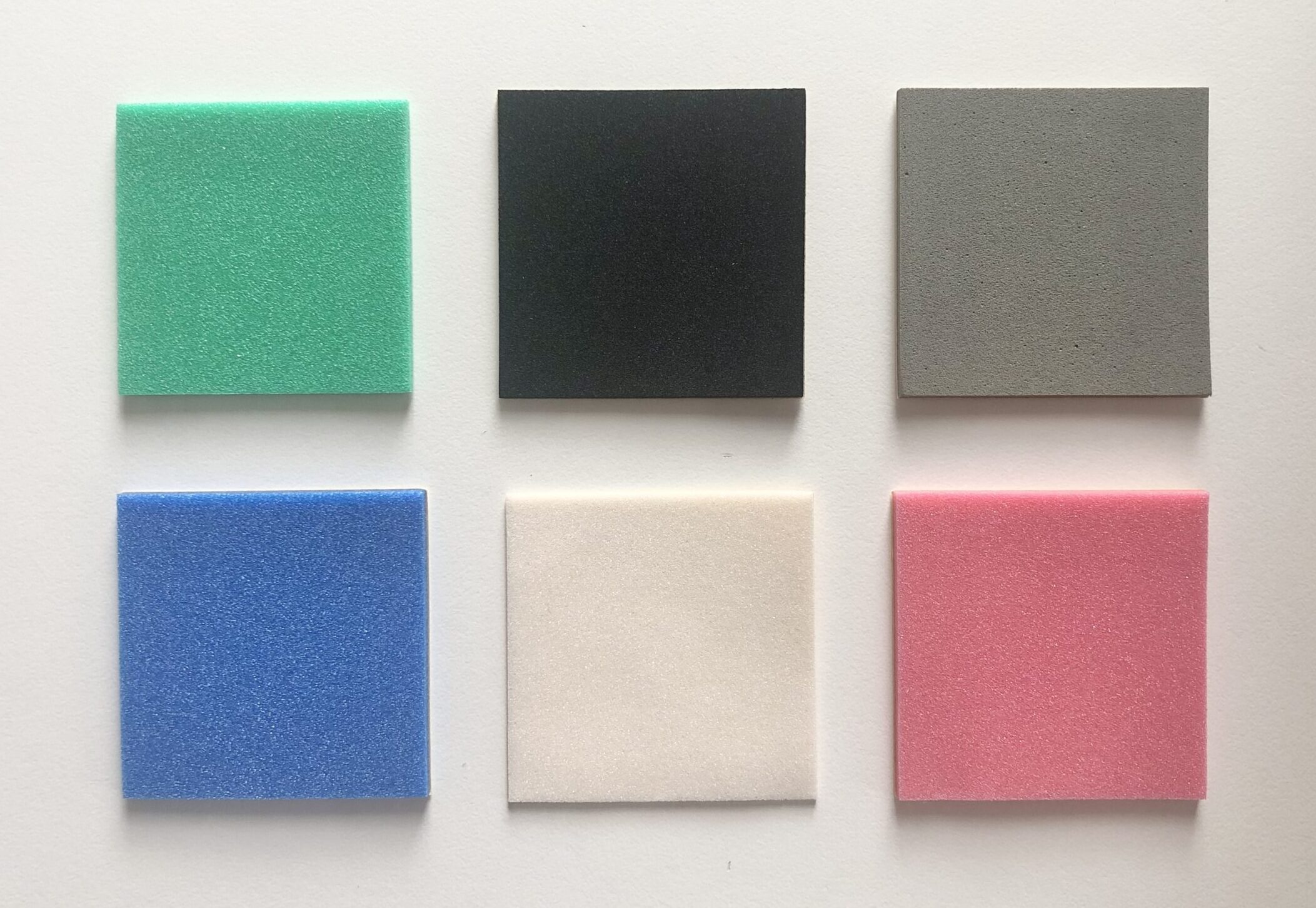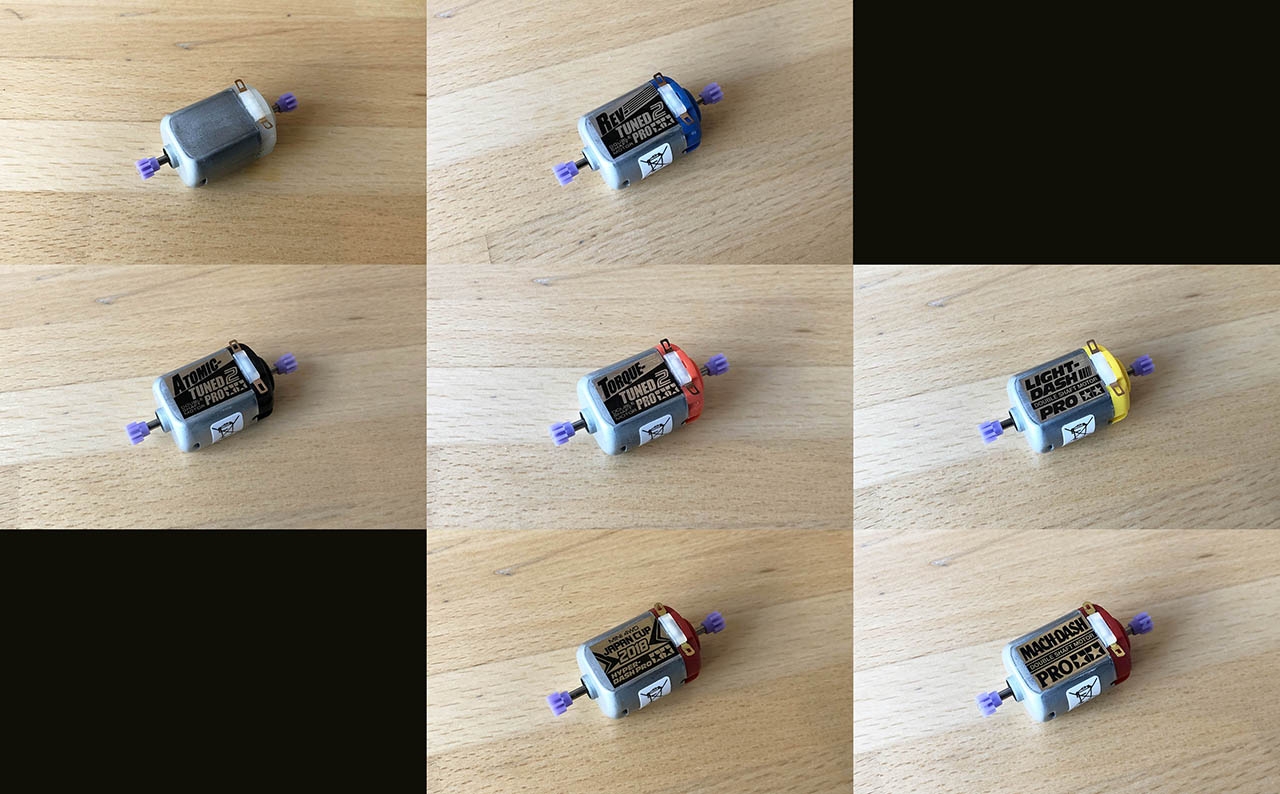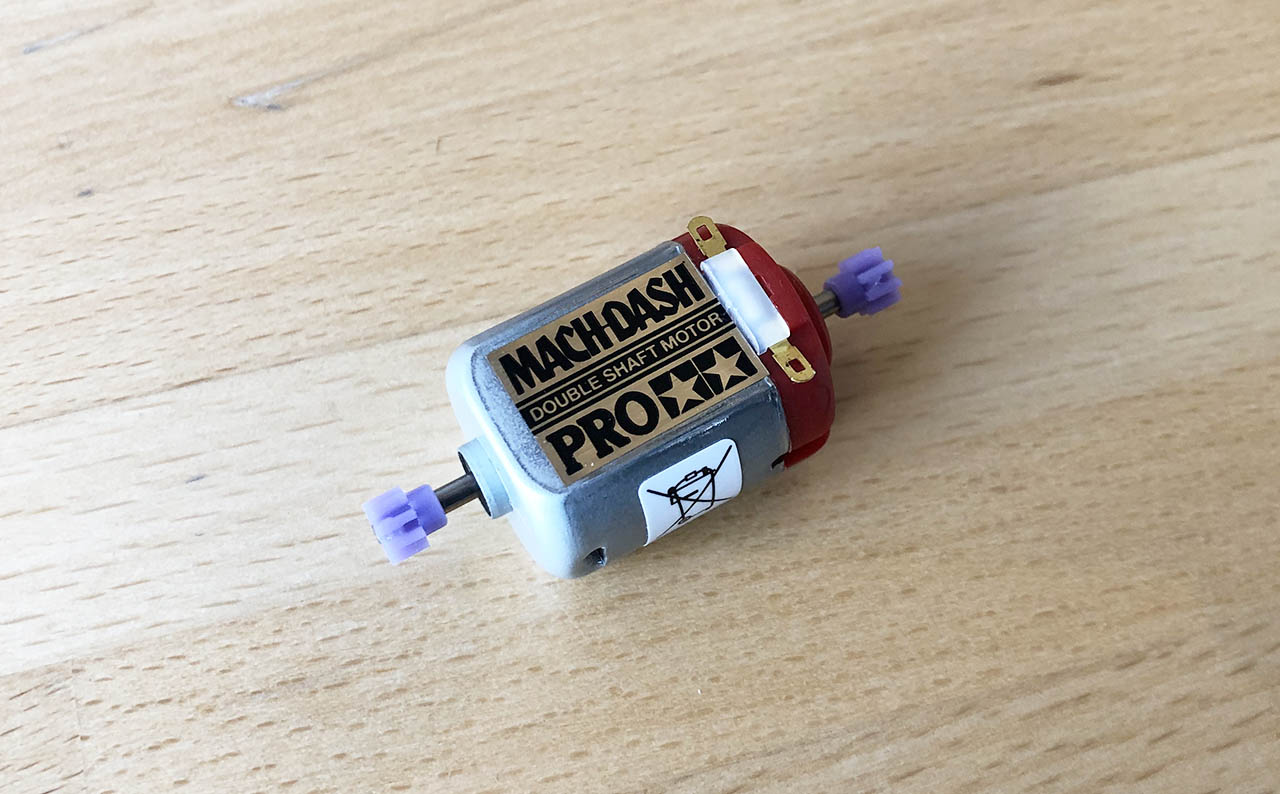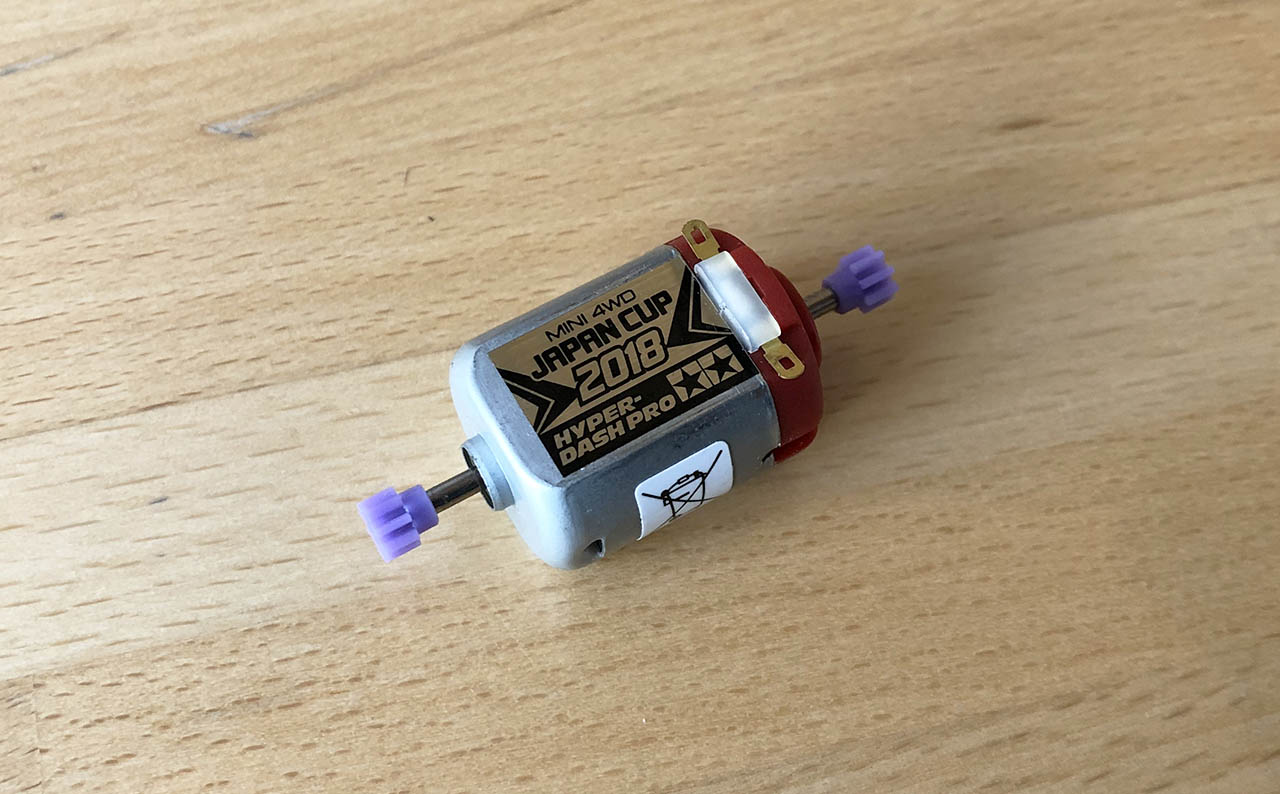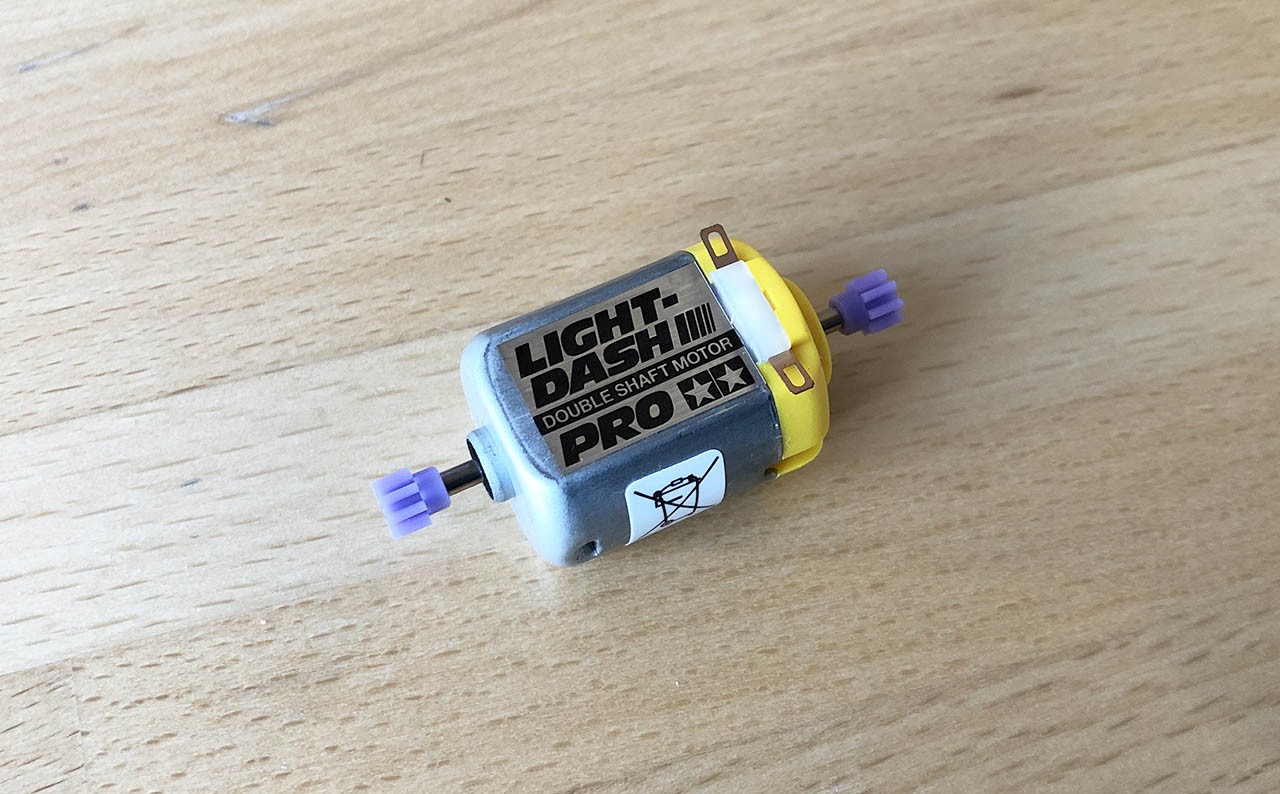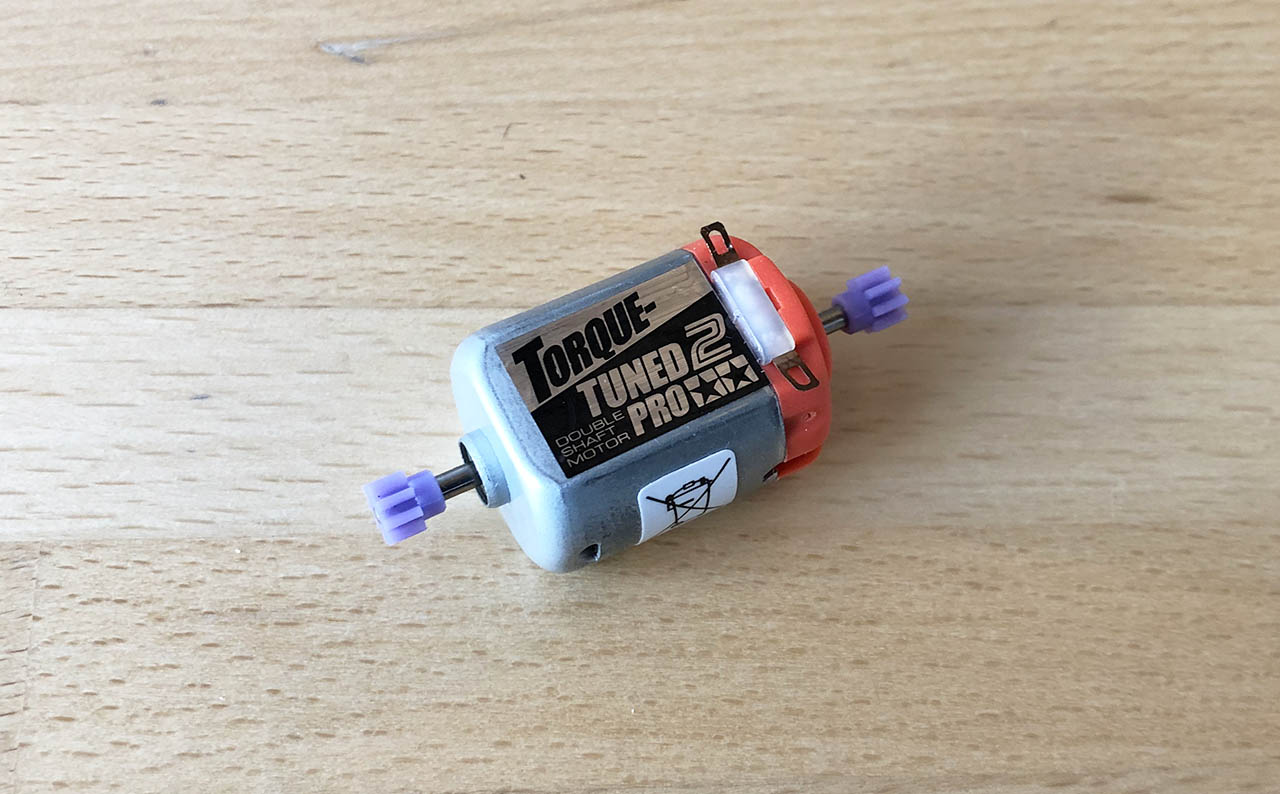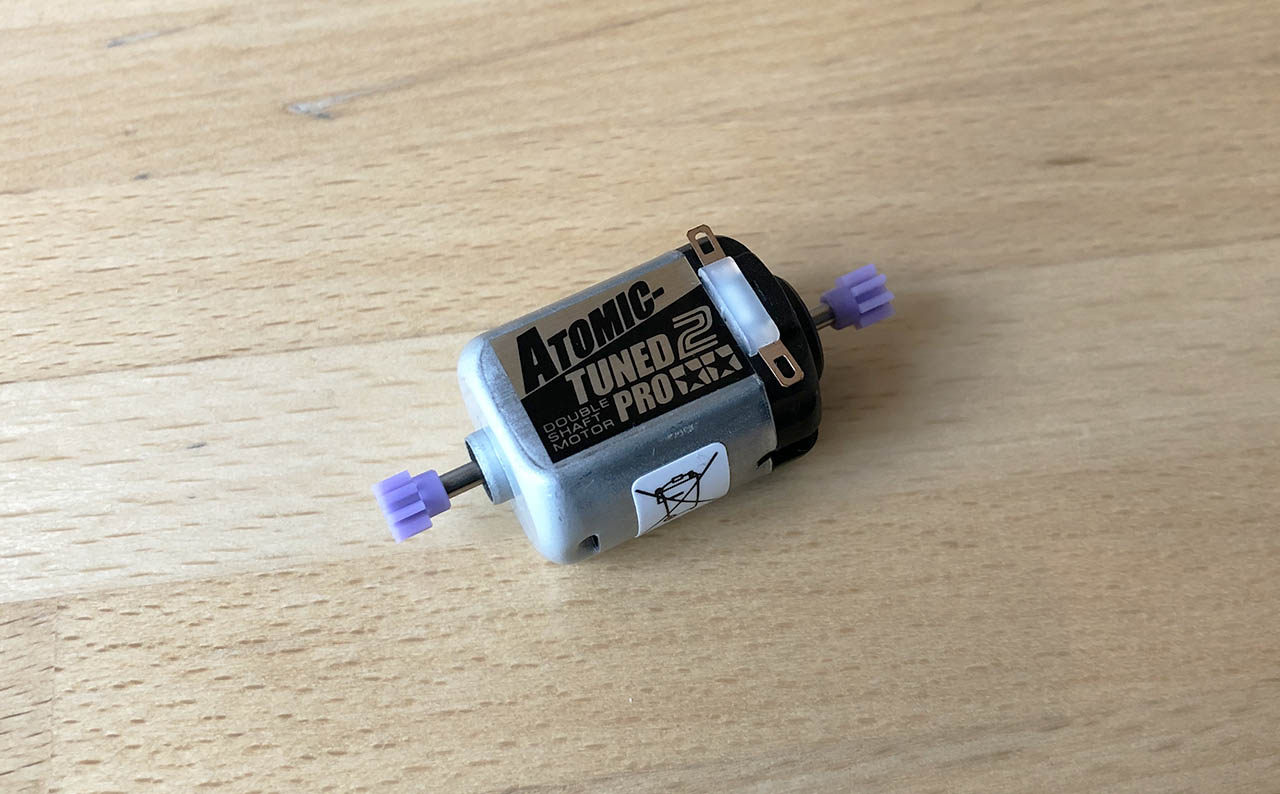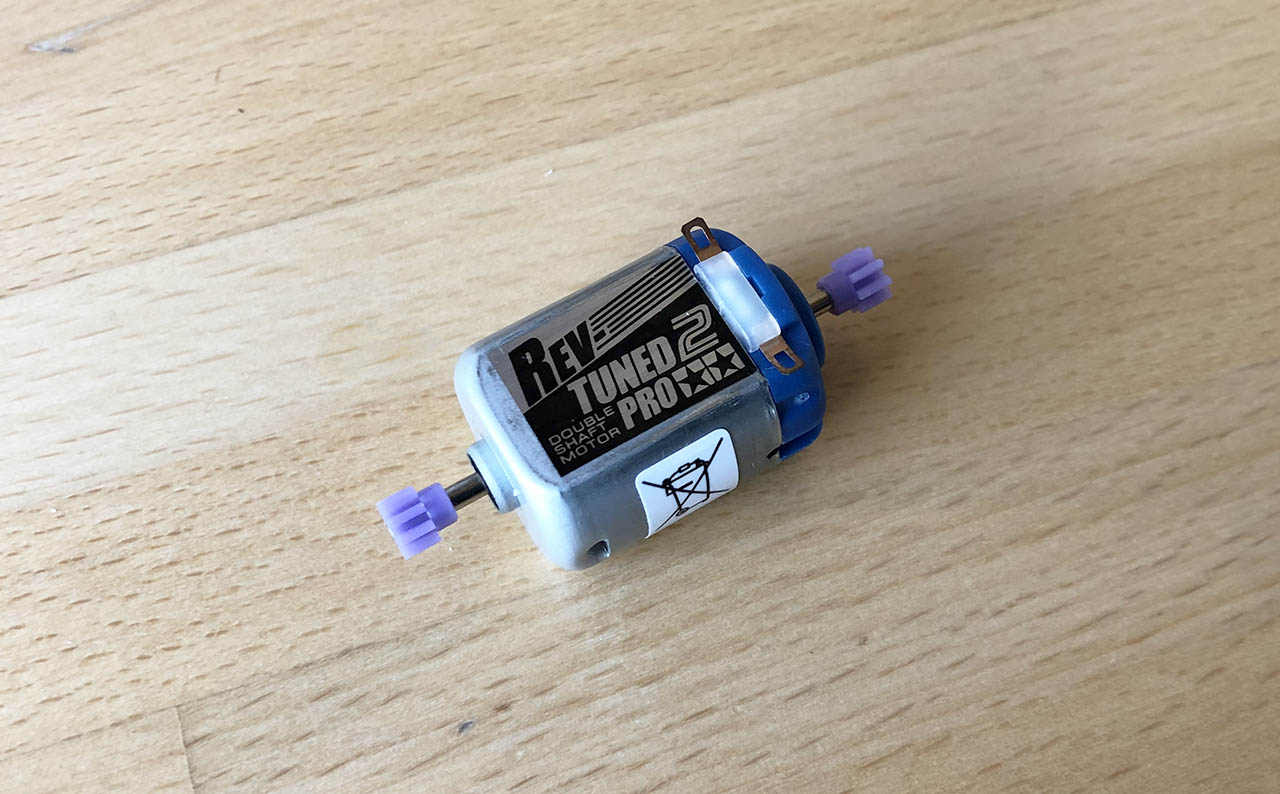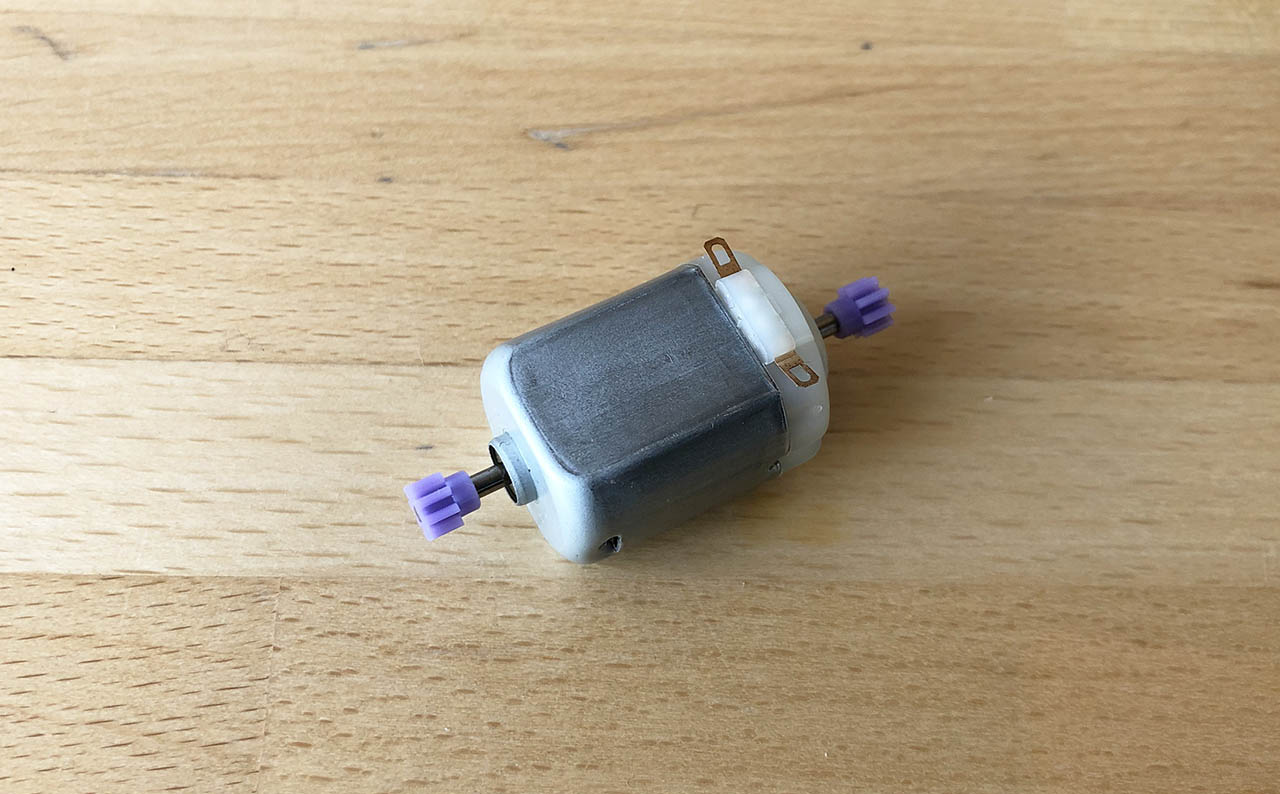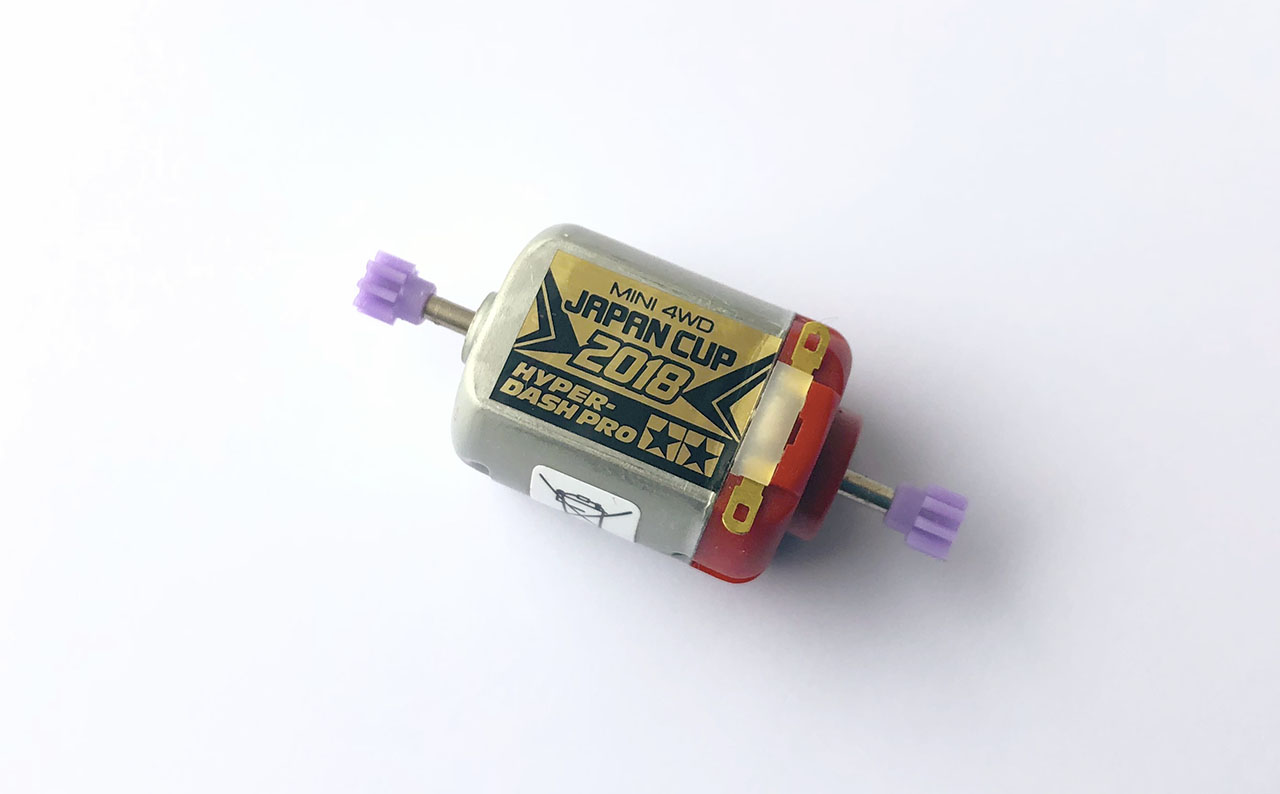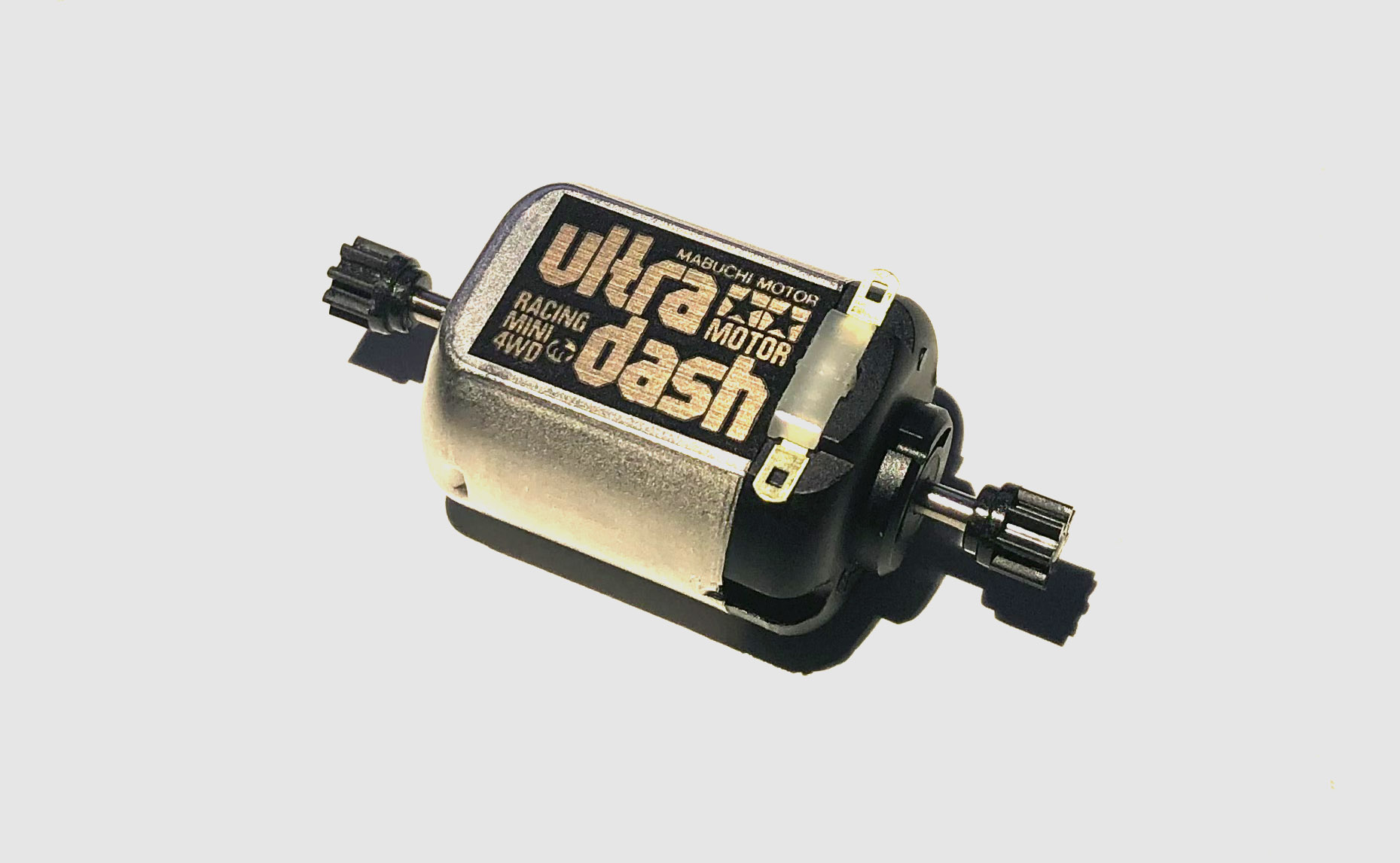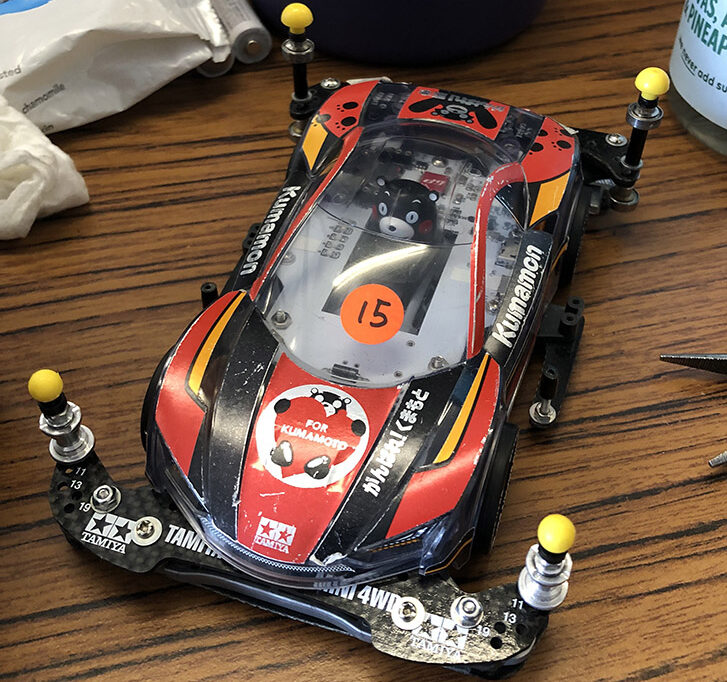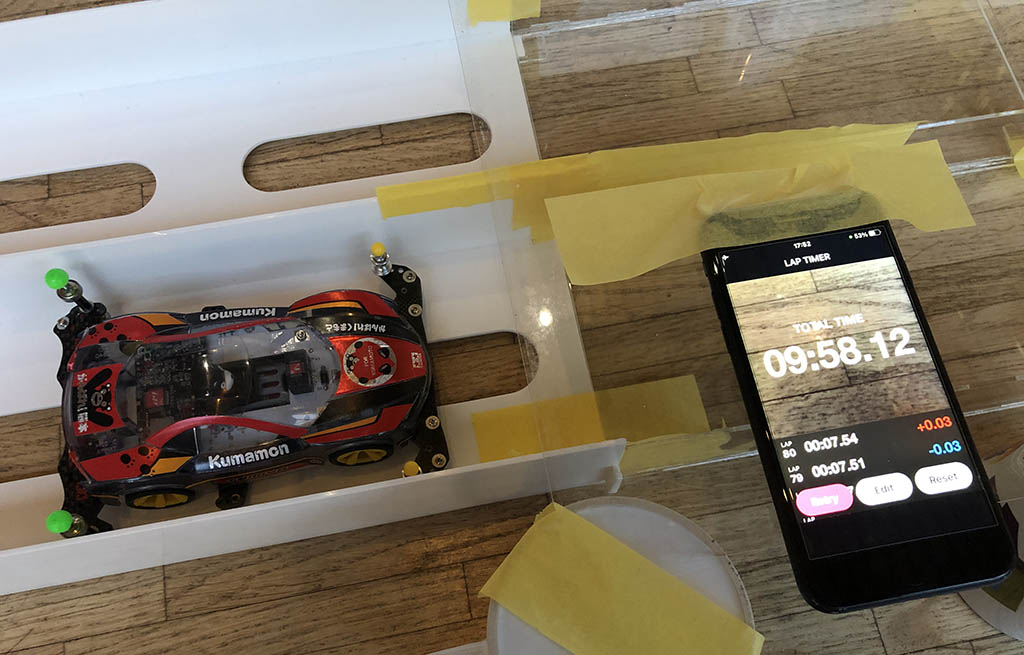First published 21 February 2023. Last updated 21 February 2023.
Introduction
We have recently tested three Tamiya Mini 4WD Dash PRO motors. Let's do a side by side comparison to find out which one is the best amongst the three. We also included the best tuned motor the Torque-Tuned 2 PRO motor in the mix as a benchmark. For full detail report on each motor, please refer to previous articles (see links below).
This is part of the PRO motor test series. We are testing all seven PRO motors: Stock PRO, Rev-Tuned 2 PRO, Atomic-Tuned 2 PRO, Torque-Tuned 2 PRO, Light-Dash PRO, Hyper-Dash PRO and Mach-Dash PRO. A report will be written for each, followed by comparison reports (like this one and Tuned compared, All PROs compared). So watch this space.

The spec
Let's remind ourselves the performance of the Tamiya Dash 2 PRO motors based on information from the Tamiya's Mini 4WD motor chart on the Mini 4WD Setup guide webpage:

| Torque-Tuned | Light-Dash | Hyper-Dash | Mach-Dash | |
| Torque at recommended load (mNm) | 1.6-1.8 | 1.3 - 1.9 | 1.4 - 1.9 | 1.3 - 1.9 |
| RPM | 12,200 - 14,400 | 14,600 - 17,800 | 17,200 - 21,200 | 20,000 - 24,500 |
Test track, method and equipment
A quick recap on how we test the motors.
The track: We tested the car in our two lanes Tamiya Mini 4WD Oval home circuit with extensions to make a bigger track with longer straights. We removed the bridge crossing. We only used the outer lane to run the experiments. Based on Tamiya's information, we calculated that the length of the circuit was ~8.66 metres long.
The method: We ran our test car around the circuit in clockwise direction, starting from the start grid (see car position below). We ran three runs per motor and each run lasted 30 seconds. The batteries was fully re-charged before each run. The motor was given enough time to cool down to avoid performance loss.
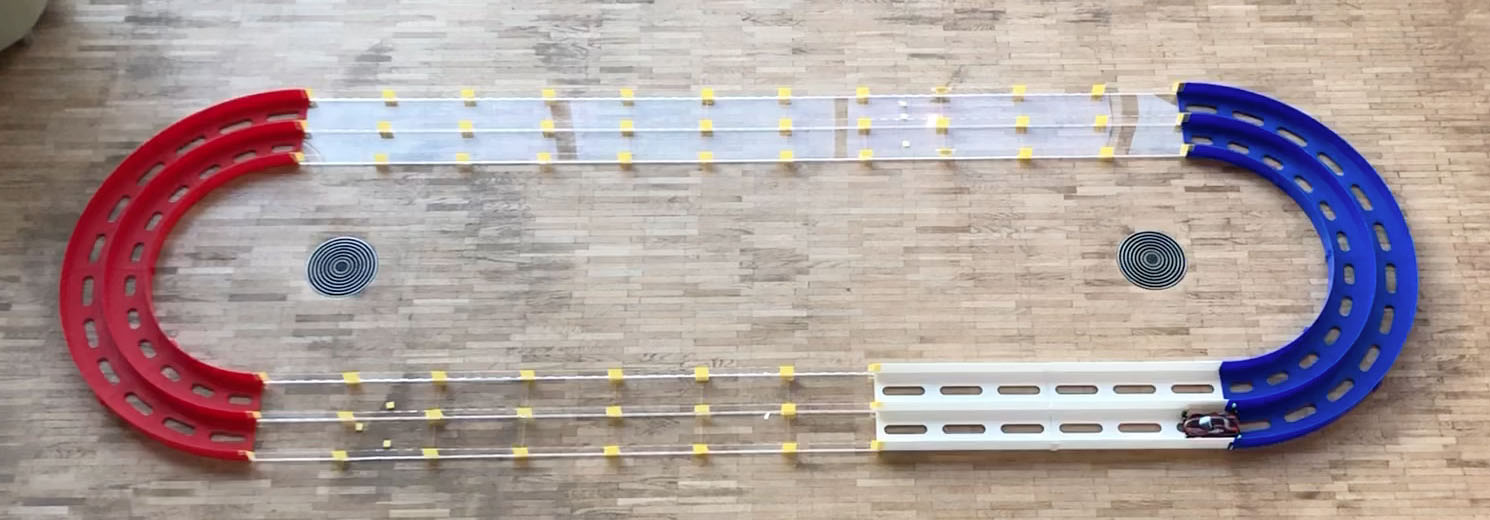
The equipment: We used our Mini 4WD development prototype based on MA chassis with telemetry data recording capability powered by ARM Cortex M0 48Mhz processor (Arduino Zero) to record data in an on-board data storage device. After every run, we downloaded the data (in CSV format) from the on-board computer and analysed the results with our analytic web app and Microsoft Excel.

For more information, please check the full reports e.g. Stock PRO, Rev-Tuned 2 PRO, Atomic-Tuned 2 PRO, Torque-Tuned 2 PRO, Light-Dash PRO, Hyper-Dash PRO and Mach-Dash PRO.
Top speed comparison
Let's compare the top speed of the four motors in car speed (m/s).
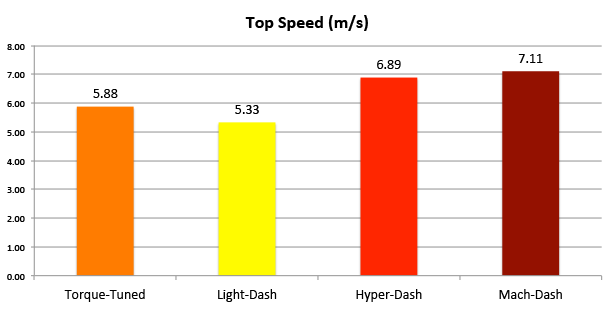
Our Mach-Dash PRO motor has the highest top speed at 7.11 m/s on average based on the result from three runs, followed very closely by our Hyper-Dash PRO at 6.89 m/s. Our Torque-Tuned 2 PRO came third at 5.88 m/s and our Light-Dash PRO came last at 5.33 m/s. The surprise was that our Mach-Dash PRO was only marginally faster in top speed even though it has a 3200 RPM advantage on the spec and our Torque-Tuned 2 PRO motor has a higher average top speed than our Light-Dash PRO.
Average speed comparison
Let's compare the average speed of the four motors in car speed (m/s).
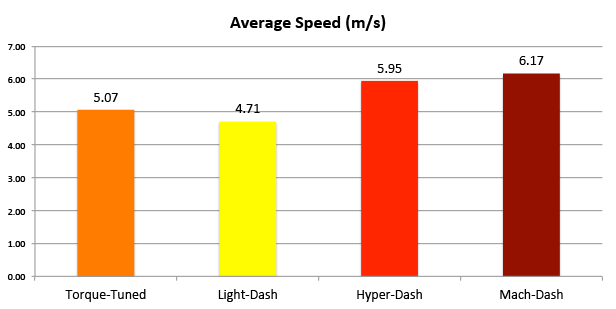
Similar to the top speed comparison, our Mach-Dash PRO motor has the highest average speed at 6.17 m/s on average based on the result from three runs, followed very closely by our Hyper-Dash PRO at 5.95 m/s. Our Torque-Tuned 2 PRO came third at 5.07 m/s and our Light-Dash PRO came last at 4.71 m/s.
Motor torque comparison
Let's compare the motor torque of the four motors.

Surprisingly our Mach-Dash PRO motor has the highest torque at 1.69 mNm on average based on the result from three runs, followed by our Hyper-Dash PRO at 1.49 mNm, then our Light-Dash PRO at 1.36 mNm and lastly our Torque-Tuned 2 PRO at 1.18 mNm. The differences among the motors are very clear. The big surprises are (1) our Torque-Tuned 2 PRO has the least torque based on our measurement despite having pretty much the highest torque on paper. (2) the Mach-Dash has more torque than the Hyper-Dash PRO.
Top speed and average speed compared
Let's put the top speed and average speed figures (motor RPM) in one chart and see what we can discover.
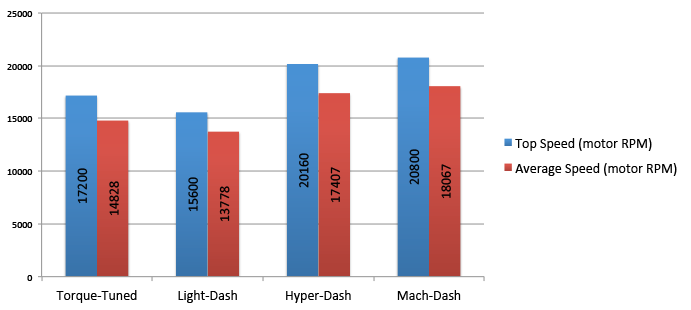
Our Mach-Dash PRO is the clear speed king here. It has the highest top speed and average speed. But our Hyper-Dash PRO motor is not that far behind. Our Light-Dash PRO motor has the smallest variation.
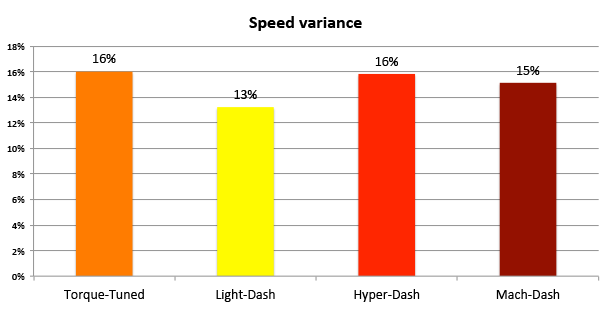
It is more clear when we calculate the variance in percentage i.e. (top speed - average speed) / average speed × 100% and plot a chart as above.
Higher variance will make it harder to control the speed over an obstacle. So if you want the most consistent performance, it seems like the Light-Dash PRO motor will give you just that.
How do they compare with Tamiya recommendation?
Here is an extract of the performance graph from Tamiya's website.
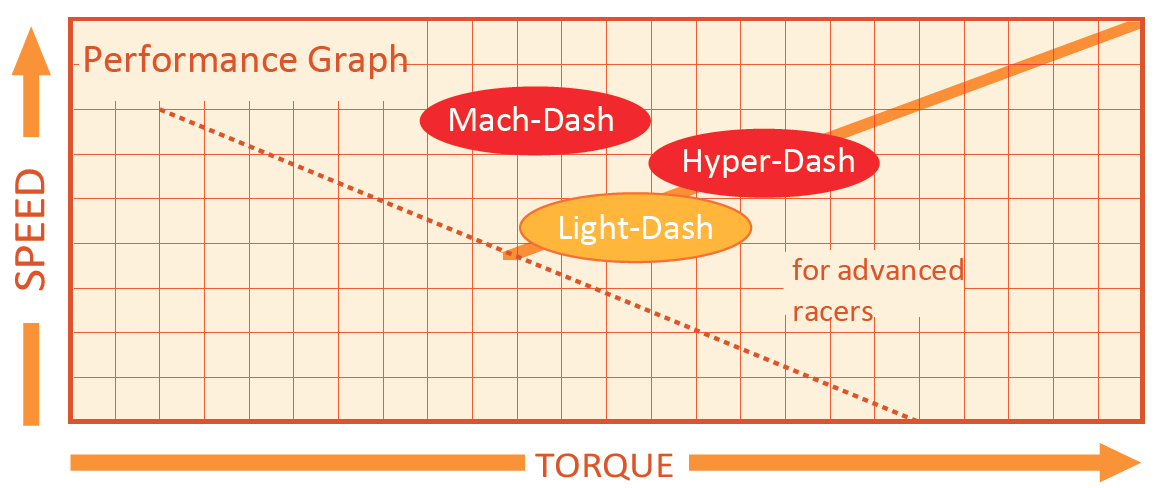
The graph gives the impression that Mach-Dash PRO motor gives you more speed, Hyper-Dash PRO motor gives you the most torque (acceleration) and the Ligh-Dash PRO motor is a slower version of the Hyper-Dash PRO motor.
Let's plot our result in a similar format and see what we can discover:

Y-axis is motor RPM and x-axis is motor torque (mNm).
The diamond dots are the results based on our measurements (average speed and motor torque from standstill). The colour dash boxes are based on information on Tamiya's website. The colour are related to the colour of the bell cap of the motor with Torque (in orange), Light-dash (in yellow), Hyper-dash (in bright red) and Mach-dash (in dark red).
| Torque-Tuned | Light-Dash | Hyper-Dash | Mach-Dash | |
| Torque at recommended load (mNm) | 1.6 - 1.8 | 1.3 - 1.9 | 1.4 - 1.9 | 1.3 - 1.8 |
| RPM | 12,200 - 14,400 | 14,600 - 17,800 | 17,200 - 21,200 | 20,000 - 24,500 |
| Motor Torque from standstill (mNm) | 1.18 | 1.36 | 1.49 | 1.69 |
| Average Speed (motor RPM) | 14,828 | 13,778 | 17,407 | 18,067 |
Looking at the colour dashed boxes, they are quite close to what Tamiya illustrated in their performance graph.
We are going to compare our measured average speed with RPM from Tamiya and our motor torque from standstill with torque at recommended load from Tamiya. Since we don't know how Tamiya measured and made those claims, we don't have a 100% like-to-like comparison. But what we have done is a start. We have to start somewhere, right?
To make it easier to visualise, we have coloured the figures according to whether they are on spec or off spec. On spec in green and off spec in red.
In terms of motor RPM, comparing average speed with Tamiya's RPM spec, our measurements are often below spec.
In terms of torque, comparing motor torque from standstill with Tamiya's torque at recommended load, our measurements are on spec.
From our measurements, it seems like Mach-Dash has the highest average speed and torque, while the Light-Dash is the smallest speed variance which should help with consistency.
In summary
We set out to find the best Tamiya Mini 4WD Dash PRO motor and we got some interesting results. We found that our Mach-Dash PRO motor has the highest top speed and average speed. Our Light-Dash PRO is the slowest but it has the smallest speed variance, so it should give a more consistent performance. So which is the best Dash PRO motor? It depends, if you want the ultimate speed, then the Mach-Dash PRO should be your choice of motor. However if you want the most consistent performance to tackle those tricky jumps, then Light-Dash PRO would be a good choice.
What does the result mean to fellow racers?
Mach-Dash PRO motor has the highest top speed and average speed. So it would be a good choice for high speed tracks.
For very technical tracks, we would need a motor with the smallest speed variance so that the car can perform more consistently. Since we know that small track differences would result in different traveling speed over an obstacle. So the less variance the motor gives you the higher the chance your Mini 4WD can land consistently after a jump. The Light-Dash PRO motor, based on our measurement should give you the most consistent performance to tackle technical tracks.
The experiments we did are by no means conclusive. Your setup might be different from ours which would create different results. But we hope that this report provides you an interesting insight to the subject matter.
What would you take away from this report? How would you improve it? Please feel free to leave a comment on our Facebook page @Mini4Science.


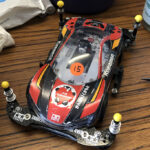
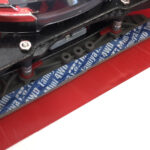
![7 different Tamiya Mini 4WD low profile small diameter tyres [Item no: 95208, 95205,95152, 95281, 95304]](https://mini4science.com/wp-content/uploads/2024/09/IMG_0538_mod2-150x150.jpg)
![8 different Tamiya Mini 4WD metal rollers [Item no: 95612, 15522, 95643, 95497, 15426, 95160, 15345, 15475]](https://mini4science.com/wp-content/uploads/2024/07/IMG_0296-150x150.jpg)
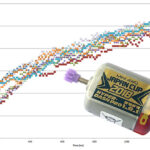
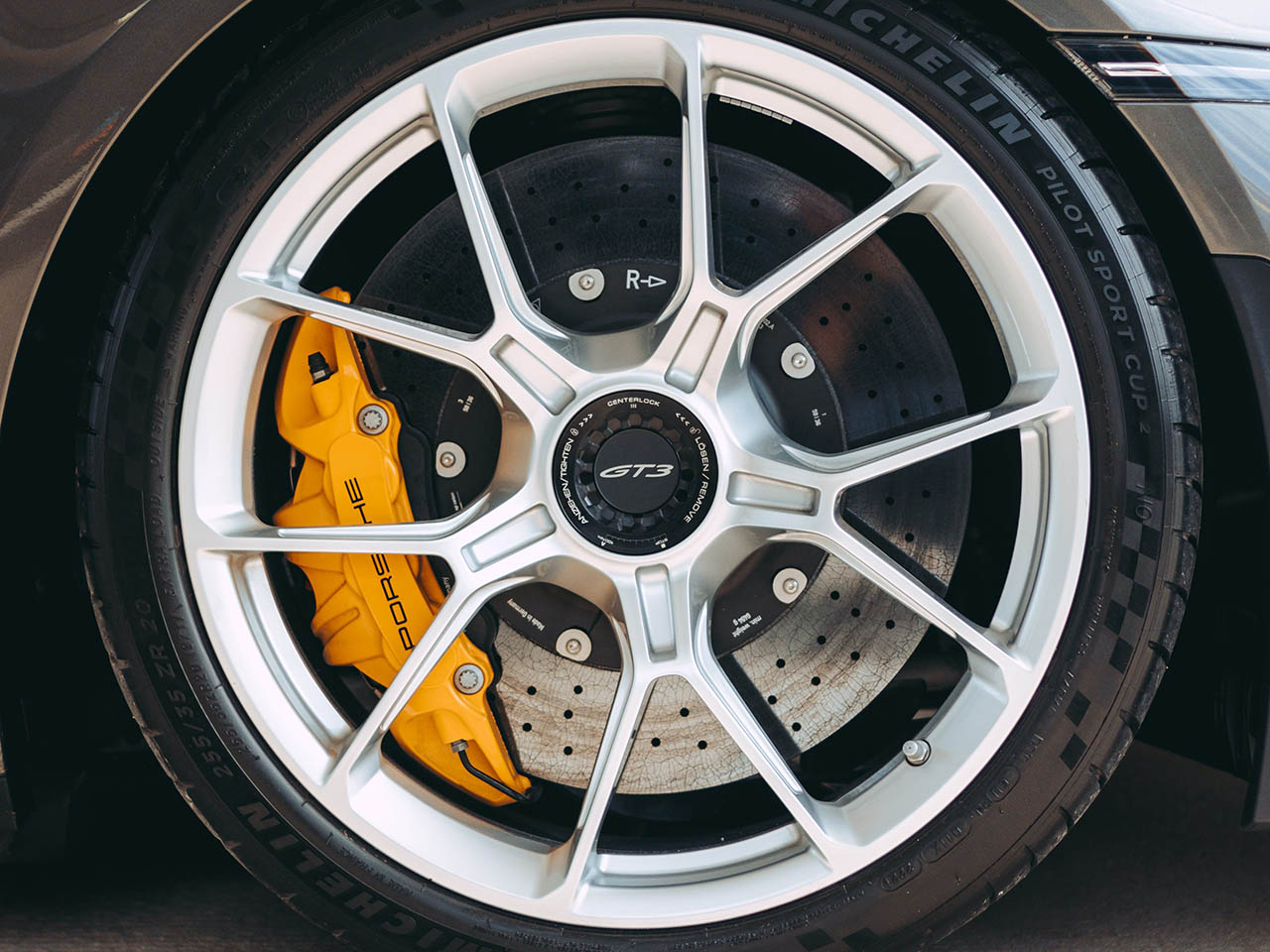


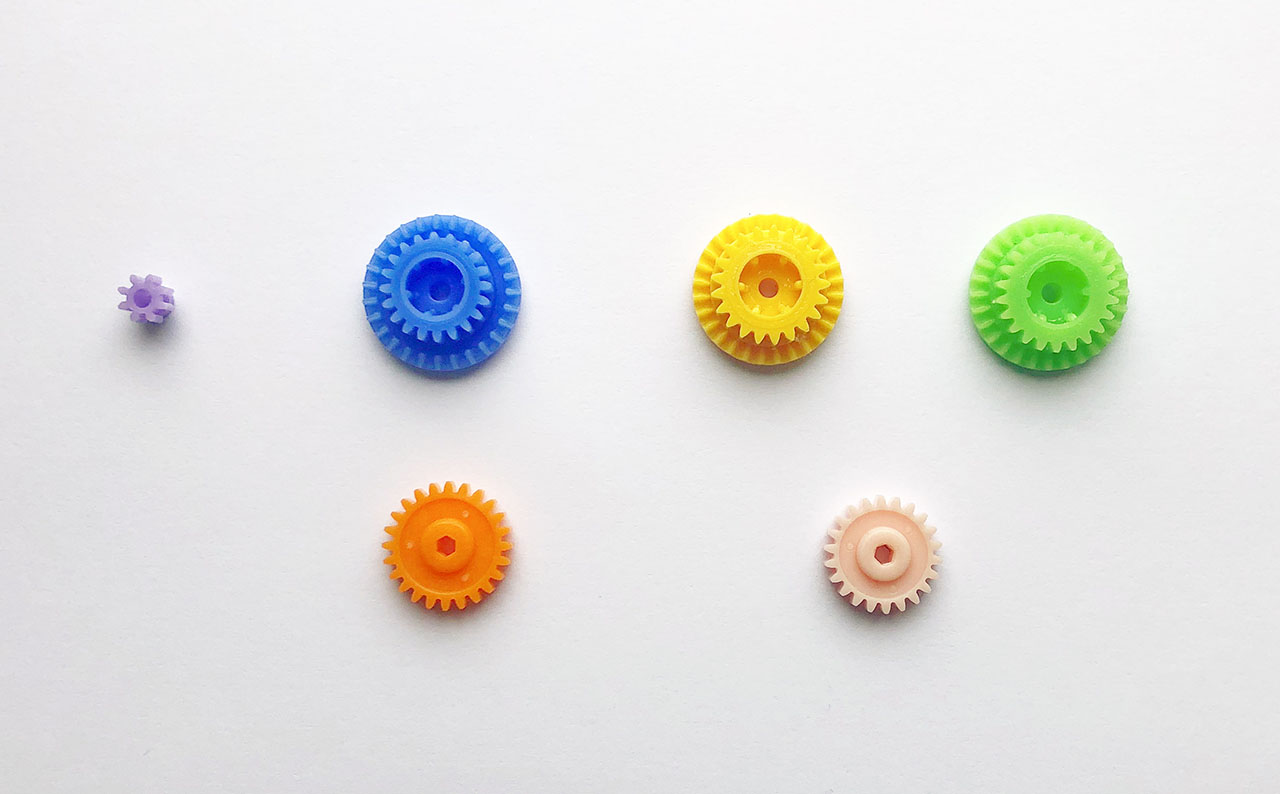
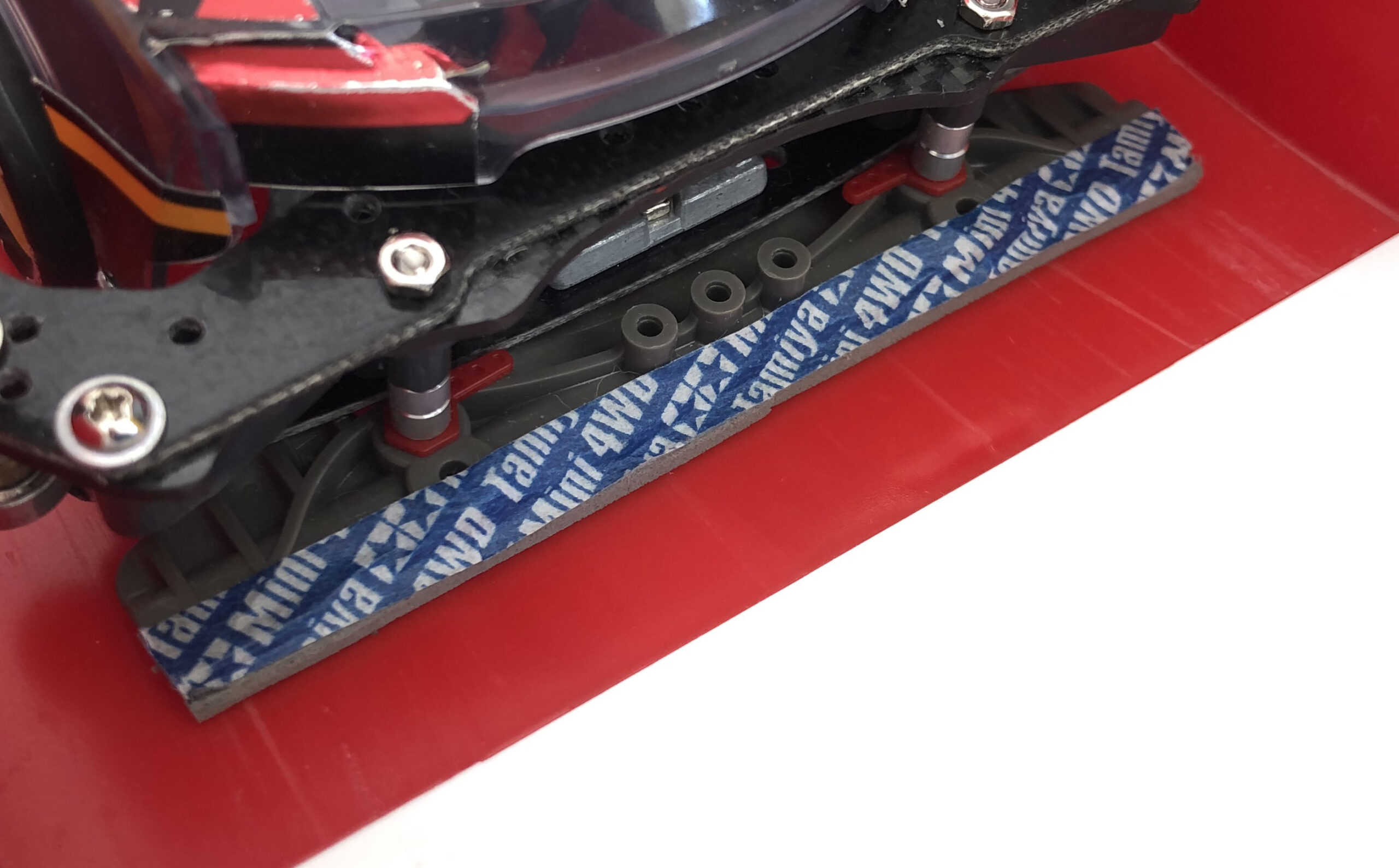
![7 different Tamiya Mini 4WD low profile small diameter tyres [Item no: 95208, 95205,95152, 95281, 95304]](https://mini4science.com/wp-content/uploads/2024/09/IMG_0538_mod2.jpg)
![8 different Tamiya Mini 4WD metal rollers [Item no: 95612, 15522, 95643, 95497, 15426, 95160, 15345, 15475]](https://mini4science.com/wp-content/uploads/2024/07/IMG_0296-scaled.jpg)

